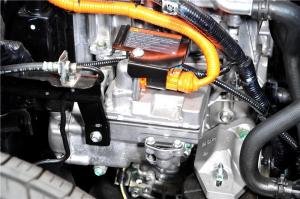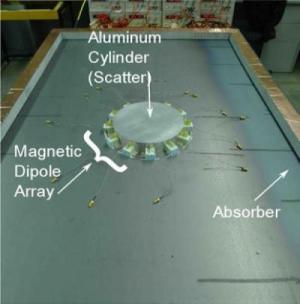
For the first time, a car manufacturer has opened the way for Norwegian research scientists to log data directly from the innermost systems of cars.
If this practice becomes widespread, the transport industry will have a tool enabling vital decision-making at a national level.
When the Nissan Group last year contributed to the cause of research by allowing SINTEF to carry out direct logging of data from its “Leaf” cars, this represented a milestone.
“We obtained access to invaluable data, and are now able to see into the very “brain” of a car and measure such things as how much energy is consumed in propulsion and climate control, and how much is generated during braking,” Astrid Bjørgen Sund and Tomas Levin at SINTEF Technology and Society explain.
Smart data capture
Researchers call this “smart data capture.” Obtaining data from a car’s existing sensors is a method which the department is now employing in a number of projects.
The scientists equip drivers and vehicles participating in the projects with smartphones or web tablets which enable them to collect valuable data for use in research.
“Modern vehicles represent a goldmine of information about how cars are used and the infrastructure they utilise. If cars were able to Tweet everything they know, we could tackle many exciting challenges,” says Tomas Levin.
“We are still looking into the same problems as before in the field of transport, but smart data capture provides a completely new source of precise data,” says Bjørgen Sund. “We can identify problems covering larger geographical areas and with sufficient data we can provide a better foundation for the major transport-related decisions which must be made.”
Modelling the E39
An example the researchers cite is European Route E39 between Trondheim and Kristiansand, which is currently being planned. Here, fuel and energy consumption will be strongly influenced by the design of the road, with its curves, ascents and descents, toll stations and tunnels, and what sort of terrain it passes through.
In connection with major projects of this sort, researchers normally base their calculations on average figures from Europe. Using smart data capture based on real-time data, they are now able to carry out more realistic calculations.
“We believe, for example, that it is difficult to predict energy consumption on twisting Norwegian roads based on European average figures,” says Levin. “So in order to perform calculations for the new E39 we select existing road sections which resemble the new one and carry out our measurements on these.”
Go deeper with Bing News on:
Smart data capture
- Automatic Identification and Data Capture Market CAGR of 14.9%, Delving into Consumer Behavior the Power of Ethnography Techniques
Automatic Identification and Data Capture Market is valued approximately at USD 34.9 billion in 2019 and is anticipated to grow with a healthy growth rate of more than 14.9% over the forecast period ...
- The Ray-Ban Meta Smart Glasses have multimodal AI now
When the Ray-Ban Meta Smart Glasses launched last fall, they were a pretty neat content capture tool and a surprisingly solid pair of headphones. But they were missing a key feature: multimodal AI.
- Meta’s smart glasses are doling out style advice
Vogue Business got early access to Meta’s updated AI-enabled smart glasses, which can react to what users see — including selfies.
- AI-RFID mix for smart tables gives ops flexibility: Angel exec
The AI-RFID hybrid approach means Angel can offer operators “flexibility” in terms of table layout design. “When they need to change it, they just need to adjust the software and the cameras [for AI ...
- The Smarter Future Of Data Capture: Uncovering New Layers Of Intelligence
In terms of current innovations, the new Apple Vision Pro is a great example of augmented reality’s significant and growing applications for the enterprise as well as for consumers. But there’s little ...
Go deeper with Google Headlines on:
Smart data capture
[google_news title=”” keyword=”smart data capture” num_posts=”5″ blurb_length=”0″ show_thumb=”left”]
Go deeper with Bing News on:
Smart data capture from cars
- Roku Is the Lead-In to Television
At its annual IAB NewFront presentation in New York City, Roku, Inc. (Nasdaq: ROKU) debuted new video experiences, game-changing ad solutions, and exciting new content partnerships. In the U.S., Roku ...
- Best Webinar Software Programs of May 2024
With the best webinar software, you can enhance your business’ webinars with higher video quality, analytics and reporting, built-in tools and more.
- Apple Reportedly Poaches Google Engineers for AI 'Vision Lab'
One of Apple's 'secretive' labs may have moved from its now-defunct car project to AI development and is staffing its Vision Lab with ex-Googlers.
- Dangers in the digital world
TODAY's cars are an amalgamation of mechanical and electronic parts run by a digital program and, in many times, remotely accessed via the internet or some other remote digital signaling device. While ...
- From Self-Driving Cars to Electric Vehicles: The Latest in Automotive Innovation
Buckle up, because the automotive industry is revving up with groundbreaking innovation! From self-driving cars to electric vehicles, the future of transportation is here. Join us as we take a closer ...
Go deeper with Google Headlines on:
Smart data capture from cars
[google_news title=”” keyword=”Smart data capture from cars” num_posts=”5″ blurb_length=”0″ show_thumb=”left”]









